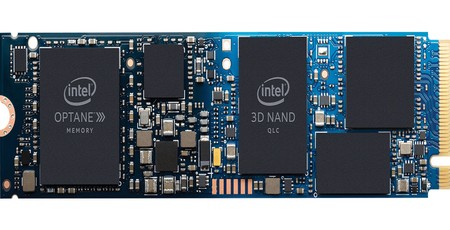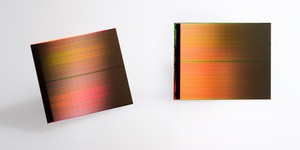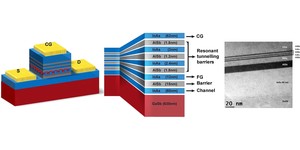Intel marries 3D XPoint, 3D NAND for Optane H10
January 9, 2019 | 11:29
Companies: #intel #intel-micron-flash #micron

Intel has announced the latest entry in its consumer-centric Optane solid-state storage family, combining the company's 3D XPoint high-speed technology with more sedate but higher-capacity quad-level cell (QLC) NAND flash in a single M.2 device.
First unveiled back in 2015 as a joint venture, since dissolved, between Intel and Micron, 3D XPoint is designed to replace traditional NAND flash for high-performance non-volatile storage while offering a performance closer to that of volatile dynamic RAM (DRAM). While its performance is considerably above NAND flash devices, it's also considerably more expensive: The company's initial product launch, which arrived on the market in March 2017, offered high-speed storage or memory expansion for the server market while the consumer variant was offered as a cache-only performance-boosting add-on just 32GB in capacity. While the company has since released larger consumer-oriented units capable of acting as generic storage, including the 118GB Optane 800P, Optane still lags behind NAND flash for capacity.
That's where the Optane Memory H10 comes in. Announced during the Consumer Electronics Show 2019 (CES 2019) and previously known under the codename Teton Glacier, Intel's latest Optane product combines a 3D XPoint cache with the company's quad-level cell (QLC) 3D-stacked NAND flash in a single M.2 device. To launch in 16GB/256GB, 32GB/512GB, and 32GB/1TB 3D XPoint/NAND flash variants, the drives effectively replicate the experience of installing a cache-only Optane M.2 stick alongside a NAND flash M.2 stick but in a single slot - making it suitable for smaller form-factor devices, including laptops and all-in-ones, without multiple slots, or in systems where the second M.2 slot is needed for higher-capacity storage.
According to Intel's internal testing, a 32GB/1TB Optane H10 drive doubles the PCMark Vantage HDD benchmark score compared to the company's 1TB QLC SSD and is around a third faster than the company's 1TB triple-level cell (TLC) SSD. The performance even outdoes the popular Samsung 970 Pro SSD, though only at the higher capacities with the 16GB/256GB variant dipping slightly under the competition.
Intel has not yet announced availability and pricing for the Optane H10 family, but it has sent the product page live on its website.

MSI MPG Velox 100R Chassis Review
October 14 2021 | 15:04








Want to comment? Please log in.